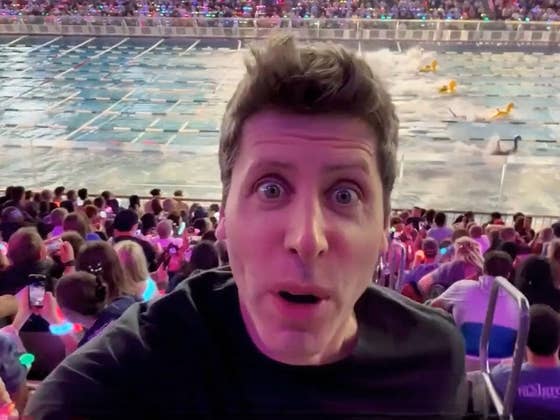With Sora 2, OpenAI unveils the next generation of its video AI—and brings the offensive to a social media platform simultaneously. Realistic videos with sound are now possible, as well as deepfakes, for everyone. The technology is fascinating, but questions remain: Is OpenAI competing with TikTok? Also, what does Sora 2 mean for deepfakes and AI slop?
On 30 September, OpenAI officially announced its new Sora 2 video platform and also provided impressive demonstrations. What’s new with the videos? Sora 2 can now generate videos including voices, ambient sounds, and music. Physical accuracy has been improved, movements appear more stable, and lip sync is much more natural. The length of the clips has also been increased to 16 seconds.
Those who want to control scenes in particular, such as via camera movements or image changes for instance, now have more control. For a quick overview of what Sora 2 has to offer, you can watch the following clip:
Externen Inhalt erlauben
Ich bin damit einverstanden, dass externer Inhalt geladen wird. Personenbezogene Daten werden womöglich an Drittplattformen übermittelt. Nähere Informationen enthält die Datenschutzerklärung.From Technology to a Platform—an Attack on TikTok
OpenAI is introducing the Sora app alongside the technology to go with it. It is very reminiscent of TikTok: an endless feed where users create, share, and consume AI videos. OpenAI is thus moving up from being a tool provider to a potential platform operator—and suddenly finds itself competing with ByteDance, Meta, and YouTube.
This creates a new stage for the creators among you and gives OpenAI direct access to users and data. The downside is obvious: the easier it is to produce, the greater the number of content, and in this case, “AI slop”. This content is basically low-quality, mass-produced AI-generated content that floods the internet.
A platform that is flooded with Sora content could quickly suffer from a wave of generic videos. For users, the question then arises: do you really want to scroll through countless AI clips that seem more interchangeable than any TikTok challenge?
Deepfakes via Cameo
The new Cameo feature is both impressive and critical. It allows the face or avatar of a real person to be incorporated into an AI video. This is attractive for creative applications—for personalized clips or marketing, for instance. After all, you can conjure yourself into the videos, as Sam Altman demonstrated in the video presentation for Sora 2.
But in reality, this also means deepfakes are becoming available for the masses, bringing questions of consent, copyright, and abuse to the fore. What happens if someone is placed in compromising scenes without their consent? How does OpenAI protect against manipulation and deception?
First of all, real people should only appear in the videos with explicit consent. For the Cameo function, you explicitly specify who may use your likeness. There are also very strict restrictions for minors. There are also filters for both the prompts and the finished videos to prevent manipulation, misuse, and more.
Metadata is used in accordance with the C2PA standard, so it is possible to trace the origin of a clip. There are also visible watermarks. Initially, only quite a few users will be allowed to use the function so that OpenAI can test how well the protective measures work.
Sora 2 Availability
Who is generally allowed to use Sora 2 at the moment? Initially, it will be limited to only people based in the USA or Canada. Another restriction is this: although the mobile app is initially free, it is only available for the iPhone. An Android version is not available yet, but is touted to be in the pipeline. It also currently works only via sora.com if you live in North America. Even then, nothing works at the moment without n invite. Either way, you’ll have to be patient for a little while more.
In the meantime, there are initial reports that the first wave of accounts in the EU will also have access to Sora 2. However, this will most likely require a Plus or even Pro account.
Initial Sora 2 Assessment
Sora 2 blurs the boundary between professional productions and AI clips. With audio, precise control, and its own platform, OpenAI is not only attacking TikTok—it is also challenging our perceptions. Whether Sora will end up inspiring creative freedom or spawning a flood of deepfakes and slop depends less on the technology and more on how responsible OpenAI is with its new power.
What do you think? Could Sora 2 really be a threat to TikTok? What is your first thought on the matter: enthusiasm because the clips are so good, or skepticism?



0 comments